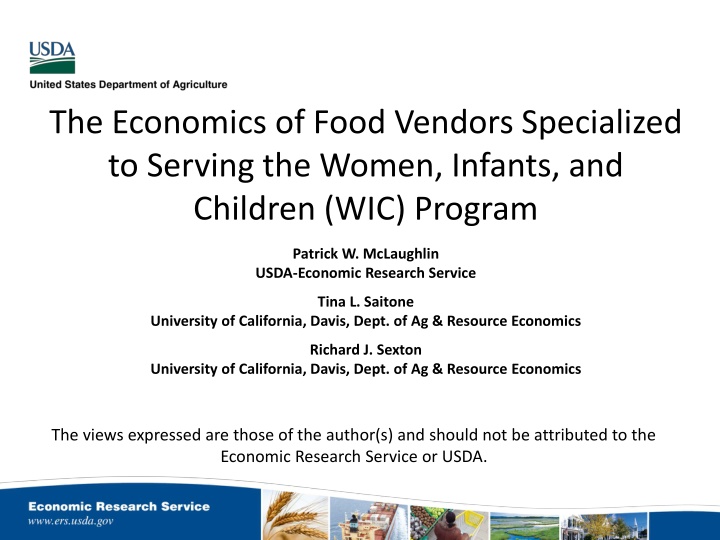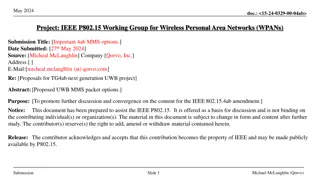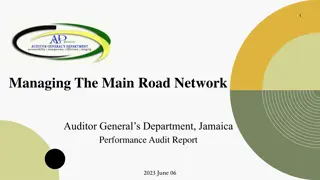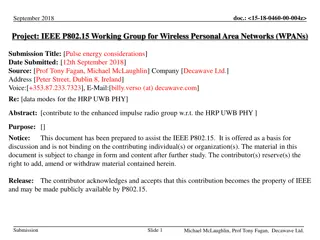
Economics of Food Vendors Serving WIC Program: Insights and Challenges
Explore the economics of food vendors specialized in serving the Women, Infants, and Children (WIC) program, focusing on cost containment, vendor performance, geographic food access, vendor attrition, and more. The study delves into California's WIC program and its impact on vendor types, food access status, and vendor entrants. Understand the dynamics of vendor attrition and the de novo participant ratio to enhance WIC program effectiveness.
Download Presentation

Please find below an Image/Link to download the presentation.
The content on the website is provided AS IS for your information and personal use only. It may not be sold, licensed, or shared on other websites without obtaining consent from the author. If you encounter any issues during the download, it is possible that the publisher has removed the file from their server.
You are allowed to download the files provided on this website for personal or commercial use, subject to the condition that they are used lawfully. All files are the property of their respective owners.
The content on the website is provided AS IS for your information and personal use only. It may not be sold, licensed, or shared on other websites without obtaining consent from the author.
E N D
Presentation Transcript
The Economics of Food Vendors Specialized to Serving the Women, Infants, and Children (WIC) Program Patrick W. McLaughlin USDA-Economic Research Service Tina L. Saitone University of California, Davis, Dept. of Ag & Resource Economics Richard J. Sexton University of California, Davis, Dept. of Ag & Resource Economics The views expressed are those of the author(s) and should not be attributed to the Economic Research Service or USDA.
Motivation Cost containment in part targets WIC vendors Little known about the economics of vendors Study using WIC benefit redemption data E.G., assess the performance of a group in terms of geographic access or cost-effectiveness 2
Research Context California WIC Program Paper voucher redemptions, Oct. 09 March 12 Large increase in number of vendors moratorium on authorization in May 12 Vendor Types Large (5+ registers) Small (1-4 registers) A50 (>= 50% food sales from WIC) 3
Research Context Geographic Food Access (USDA Food Access Research Access) Low-income, low-access: 1/3 of census tract residents mile or more from nearest supermarket Versus Normal Access 4
Research Context Entrant s contribution to access by vendor type, food access status Two measures computed using redemption data Geographic focus: counties of Greater Los Angeles area Los Angeles, Orange, Riverside, San Bernardino, and Ventura Counties 5
Vendor Attrition Definition: occurs when a WIC customer patronizes a vendor today but does not return for at least t months What value for t? t=1 propensity to shop around (opposite of store loyalty) t=3 criticalness to participants WIC food access, highly correlated with never returning 6
De Novo Participant Ratio Definition: a vendor s ratio of new-to-WIC customers to all WIC customer How long is a participant new ? Purpose: did some (entrant) vendors cause participants to enroll compared to other vendors? Counter-factual is critical: vendors facing same broad participation trends All else equal, if entrants have higher proportion of new WIC customers then perhaps caused new enrollment 9
Takeaways Entrants appear to do at least as well as incumbent vendors in attracting and retaining participants A50 vendors may have less attrition compared to large vendors Minimal difference in vendor types de novo participation ratios Unclear impacts of entry in low-income, low- access areas 12
Not Featured Relationship between WIC vendor market share and average redemption costs Simulation of redemption costs and shopping trip travel distances if A50 vendors hypothetically removed from CA WIC vendor stock 13
Thank you! Patrick McLaughlin patrick.mclaughlin@ers.usda.gov 14



















